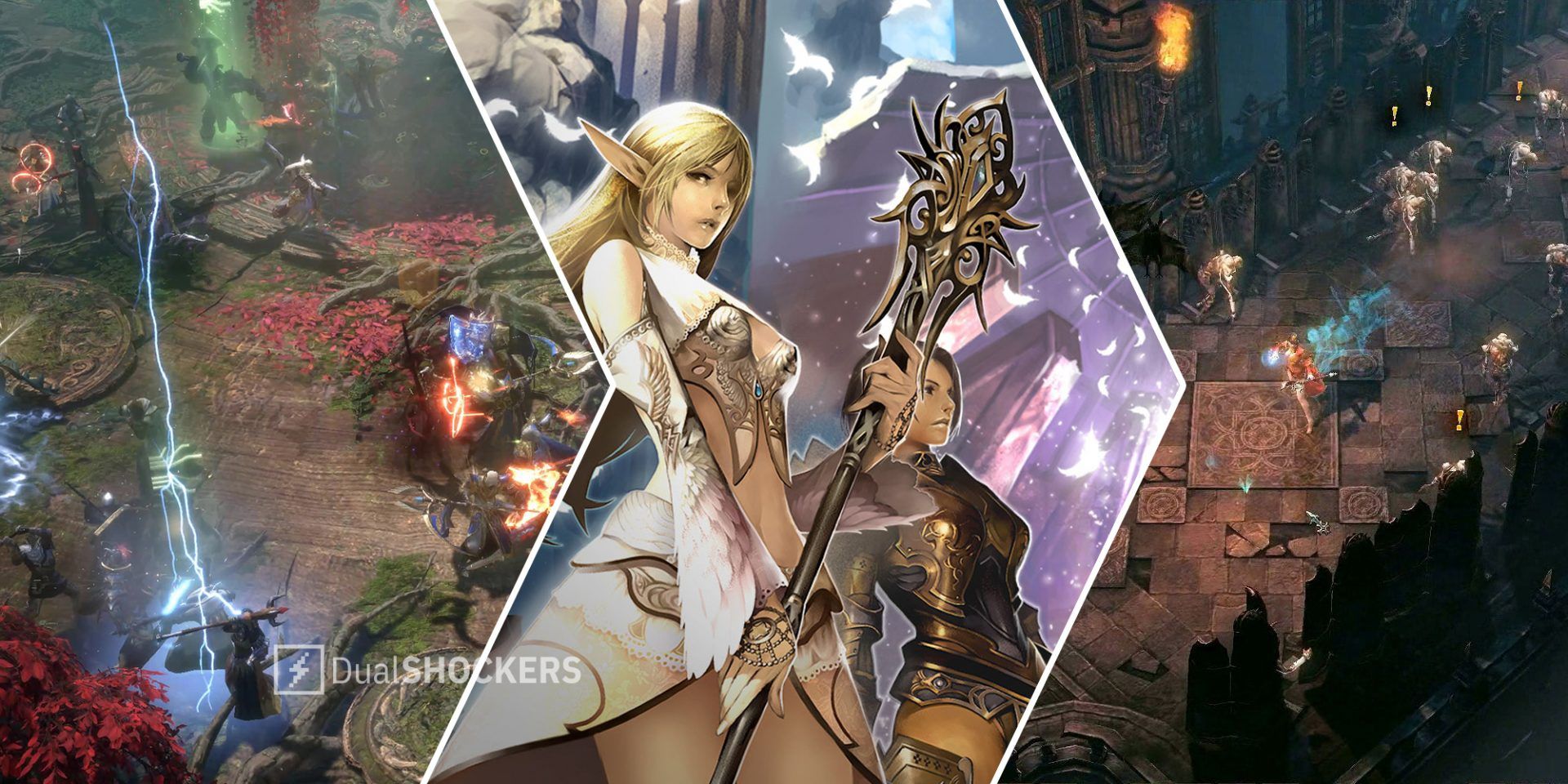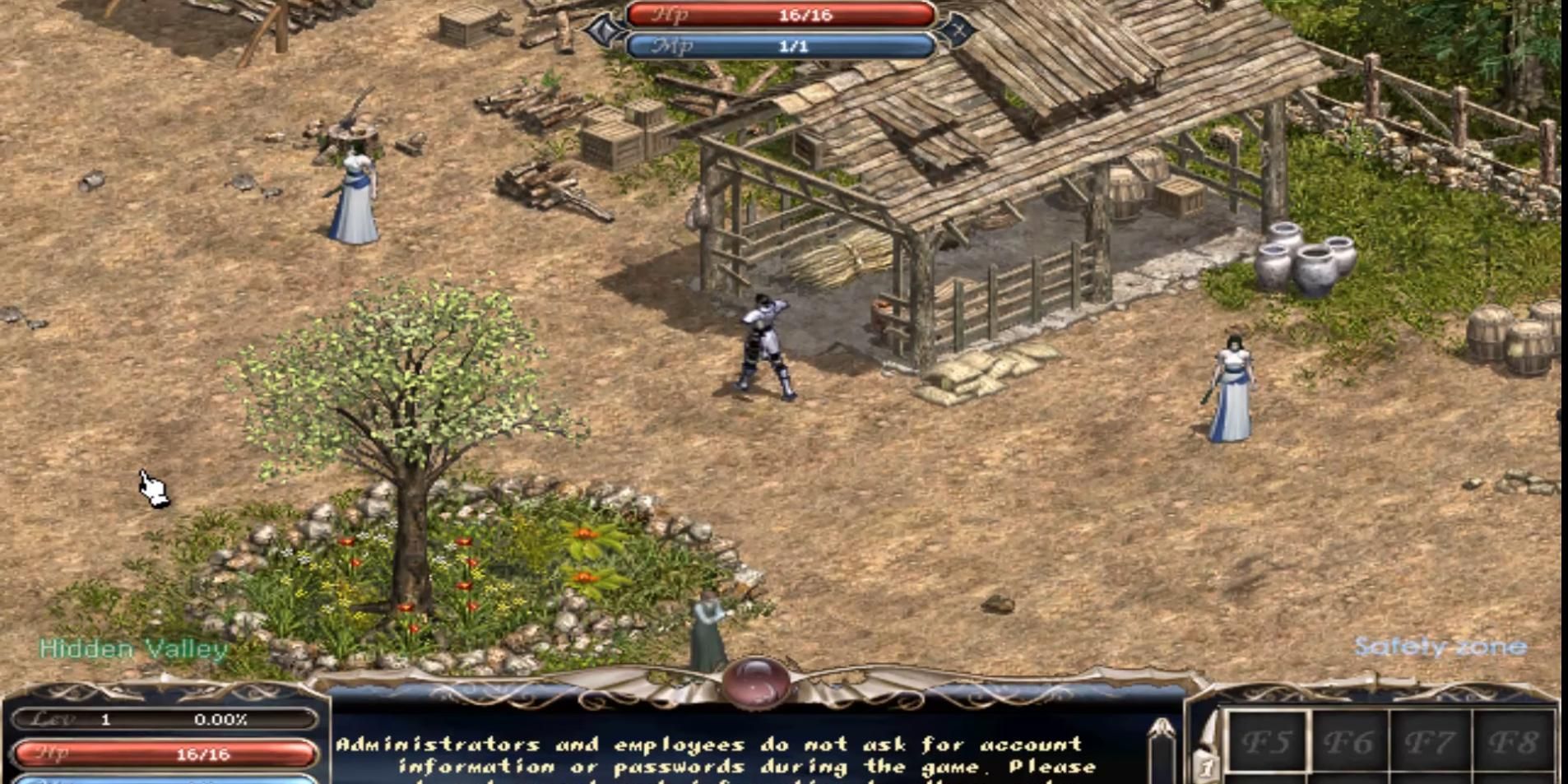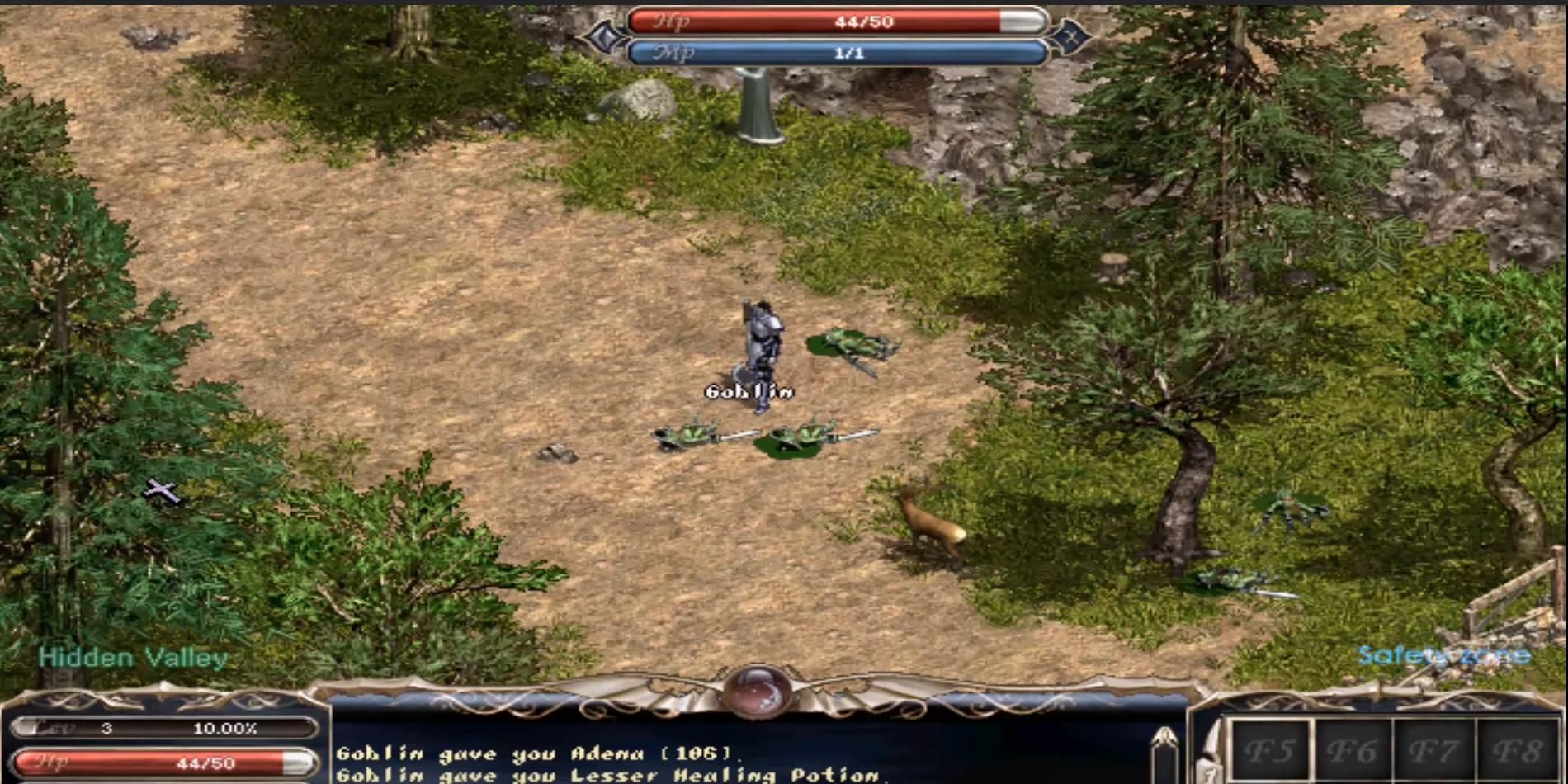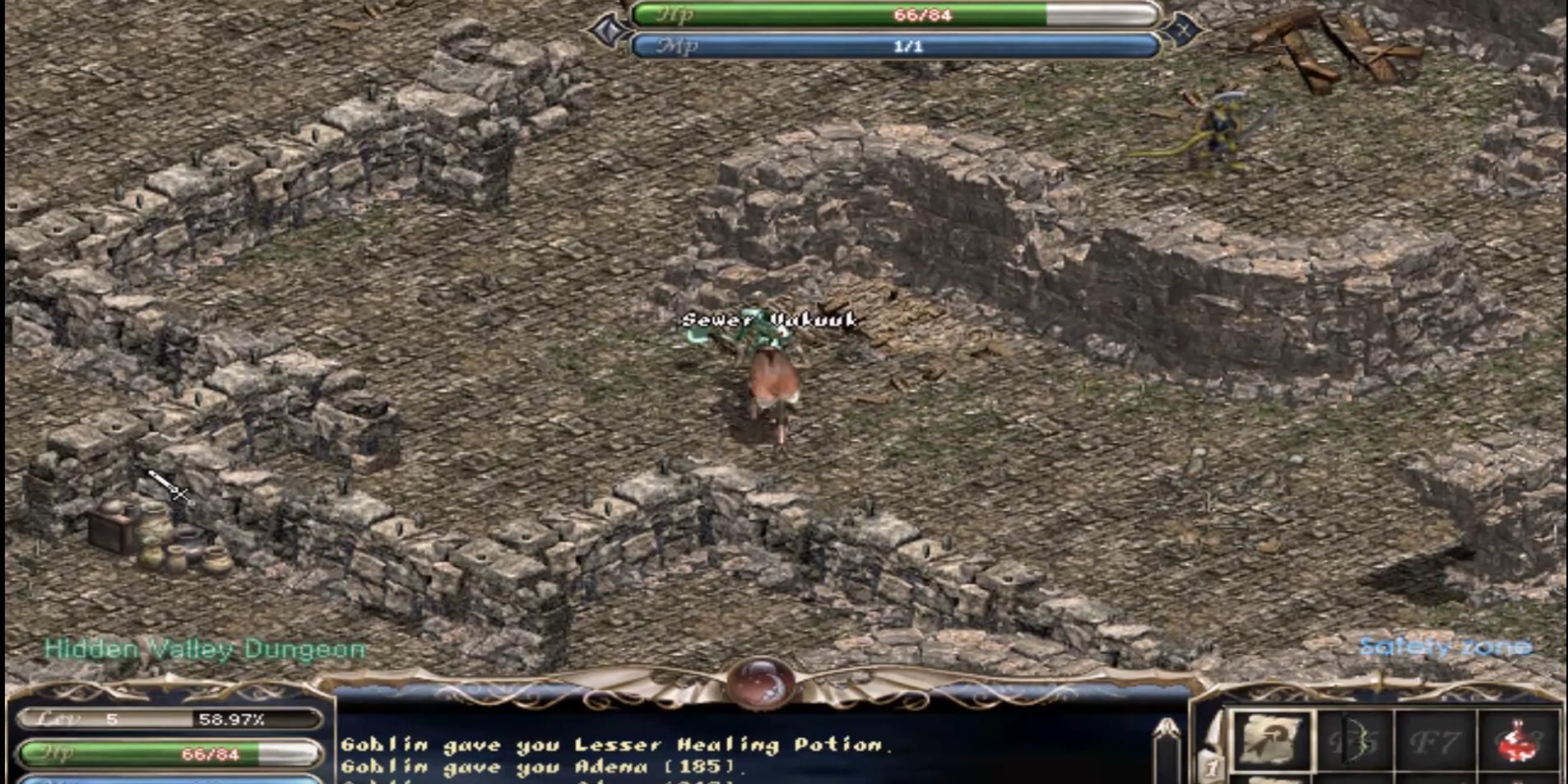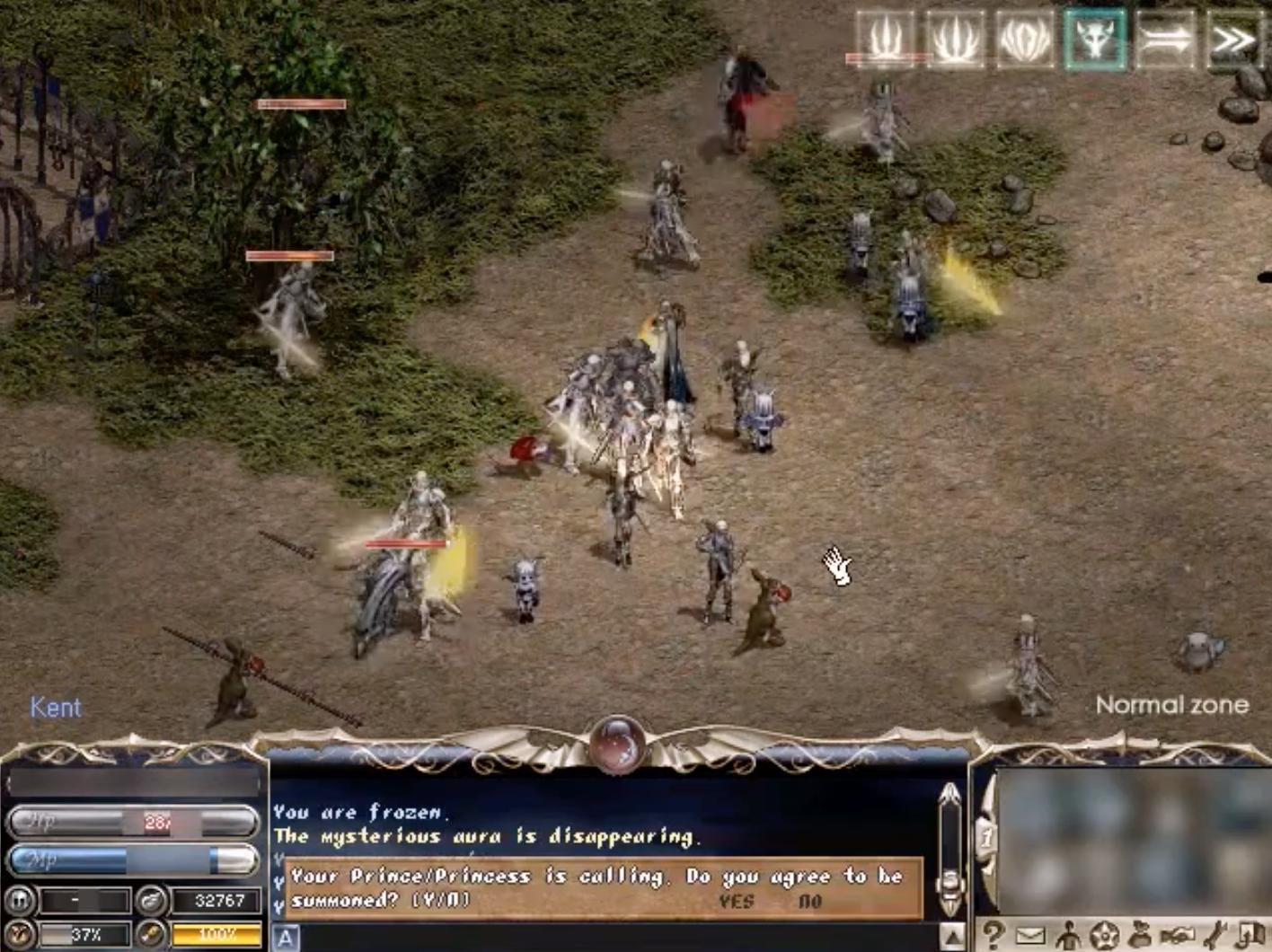Sometimes it’s acceptable to blow your own horn, give yourself a pat on the back. For those times, a popular Korean expression comes to mind: 업적을 많이 쌓였어. Doesn’t ring a bell? It’s a popular one with the kids. Literally translated, it’s gamer-speak for “I’ve racked up a lot of achievements.” It could also be repurposed to describe South Korea’s own contributions to the gaming market as it’s currently ranked the fourth biggest in the world. Consider South Korea as a nation: it's a country the size of Indiana with a population of 51.78 million, of which 33.8 million profess to be regular gamers.
But South Korea does more than just play—they also produce, specifically one of the most prolific and best-selling online game series: Lineage. They also make tender mouth-watering bulgogi, but finish this article first, then call Uber Eats.
MMO IN THE R.O.K
In the early 80s and early 90s, South Korean video game production began in earnest with a few Samsung titles like 1989's not-so-fun-to-play Alex Kidd in the Enchanted Castle (which was available everywhere), and 1992's fun-to-say Uzu Keobukseonbut (which was only available only in South Korea) .
Around the same time in the US, with the widespread popularity of “internet subscription service” AOL, more and more players had access to dial-up internet, which led to large numbers of users being able to simultaneously play online games together. Despite the incredibly crappy bandwidth of the times, the amount of multiplayer games grew to a degree that warranted a moniker for these kinds of experiences: Massively Multiplayer Online games, obviously.
By the time NCSoft Studios was founded in 1997 in Seongnam, Korea, western MMO games like AOL's Neverwinter Nights (completely unrelated to Bioware's identical 2002 game) for and Meridian 59 were picking up steam fast. In 1998, NCSoft’s first game, Lineage, not only established them as the first Korean developers to toss their hat into the online gaming arena, but also as patrons of 만화, or Korean manga.
See, Lineage’s original concept was based on manhwa artist—and current president of the Korea Cartoonist Association—Shin Il-suk's medieval epic of the same name. In an interview, Il-suk goes into her initial experience with Lineage at the dawn of online gaming. “I tried the game, but it would freeze every five minutes for a few seconds, and my character would die. People told me it’s better at internet cafes, but it was more or less the same. I thought the game wasn’t going to get anywhere unless they (NCSoft) do something about this, and they did do something about it.”
Shin Il-suk’s comic hinges on a few classic medieval tropes involving long-haired maidens, longer-haired princes, blood oaths and loads of family drama. There are a few twists and turns, but the most important sticking point is that in the kingdom of Aden, the young red-headed Prince Deporojue is the good guy, who builds up guilds and armies to defeat his step-dad, Ken Rauhel, the bad guy. The plot of the game is also just as basic: good medieval guys fighting bad medieval guys in a medieval setting.
However, NCSoft was much more interested in implementing tried-and-true RPG mechanics, such as quest points and character upgrades and grind. You definitely have your options: Elf, Dark Elf, Knight, Prince/Princess, Magician, Dragon Knight and ultimately Illusionist. As far as MMO gameplay, a major plus to Lineage was its use of PvP (player versus player) combat, but these types of confrontations could be diminished by securing “bloodpledges” - guilds made up of like-minded players banding together under the banner of their clan leader to ensure victory during sieges (note: only Princes/Princesses can create a bloodpledge. Sorry, Dragon Knights). This was something revolutionary at the time of MMOs, and helped to distinguish Lineage as an innovative title.
The game was played from a top-down 2D isometric view that was the state-of-the-art equivalent of its MMO peers. You had your stalwart blood pledge guild, cash from monster battles and additional income rolling in from castles you'd previously sacked in nearby regions. This was known as a "castle siege" tax and was one of the main mechanics of Lineage. Once you laid siege to a castle, you became that city's lord, giving you the green light to set tax rates in stores throughout the area. It was a nice way to earn revenue while you were off fighting dragons or other players.
Picture this: you've decided to go with the knight instead of the elf because of his bravery and strength, but you must know, you can wield no magic. As a bonus, the knight's alignment is neutral, which means other players won't fight you on sight. The scene opens on the land of Hidden Valley. Your red HP and blue Mana bars are full, a few local townspeople linger around, rabbits hop among the rubble.
Here, you encounter a wizard to whom you bequeath the Talking Scroll. In return, he imparts great wisdom and items to help on your quest: maps, healing potions and weapons. Satisfied, you exit the safe haven of the town through its gates, slaughtering a few goblins along the way for some needed Adena (money). Soon, you meet another wizard. This one will grant you access to the Hidden Valley dungeon, where you can wail on some gruesome villains, while at the same time level up your novice powers. Oops, too late! A vicious Sewer Vakuuk killed you. Maybe you should've chosen the Wizard, eh?
Later, by way of a bloodpledge, you could align yourself with clans, and slice through countless armies until taking control of multiple castle towns: Diad Fortress, Aden Castle, Dwarf Castle and even Kent Castle. But you resist the urge to break the poor townsfolk and set the tax at a modest 10%. You're going to go far, young knight.
As long as the internet cafe had a solid bandwidth, life was good, especially for NCSoft who in 1998 alone raked in $1,496,470 dollars (about ₩2,000,000,000 Korean won) from the game, with over one million users during the first fifteen months. It did especially well in the Asian market, with Taiwan leading the charts. Within the first twelve days of Lineage’s launch, the number of Taiwanese users surpassed 80,000, earning Lineage the title of best online game in Taiwan.
Apart from the cash, Lineage won the 1998 Korea Game Awards, along with the subsequent 2002 Korea Game Awards Export Award, as well as the 2005 Super Brand Award hosted by South Korea’s Ministry of Commerce, Industry and Energy. Besides loyal players at home and throughout Taiwan, Lineage’s popularity rose among users from Japan, China, Europe and North America, making it one of the most popular online games in South Korea's history.
HEIRS TO THE THRONE
Success often begets another attempt at success. In this case, Lineage 2 was released in 2003 under a perennial cloud, mainly due to the divisive “pay to play” business model, which allowed players with deep pockets to gain the advantage on the battlefield.
As of May 2022, Lineage W’s revenue has far exceeded the predictions, hitting 790.3 billion won, (about $591 million). However, none of this would've been possible without the initial success of its ground-breaking founder.
South Korean games are a bit like ghosts and gravity: they exist, even if you can’t see them. However, in the case of the original Lineage, the game just didn’t cause a blip on the map—it ate up the entire globe. It also served as a launchpad for South Korean devs to earn their place among the online giants of the game world. Viewed through the prism of nostalgic appreciation, the flagship game of Korean MMOs deserves a retrospective and knightly kneel.
In the loving words of Shin Il-suk, “The best thing about it (Lineage) is that you don’t have to be good at games," which is an oddly comforting sentiment. There's something to be said for those who love classics, even the ones with low bandwidth. And to that I say, "가재는게 편이라". Something akin to, "Birds of a feather...". A bloodpledge, perhaps.

